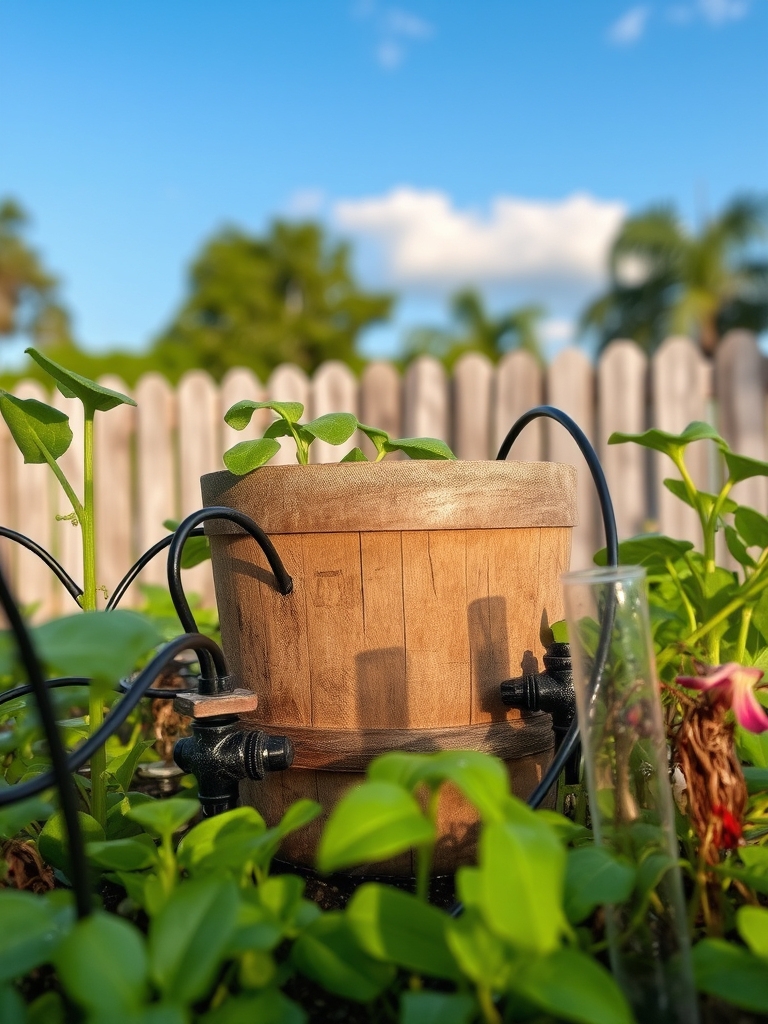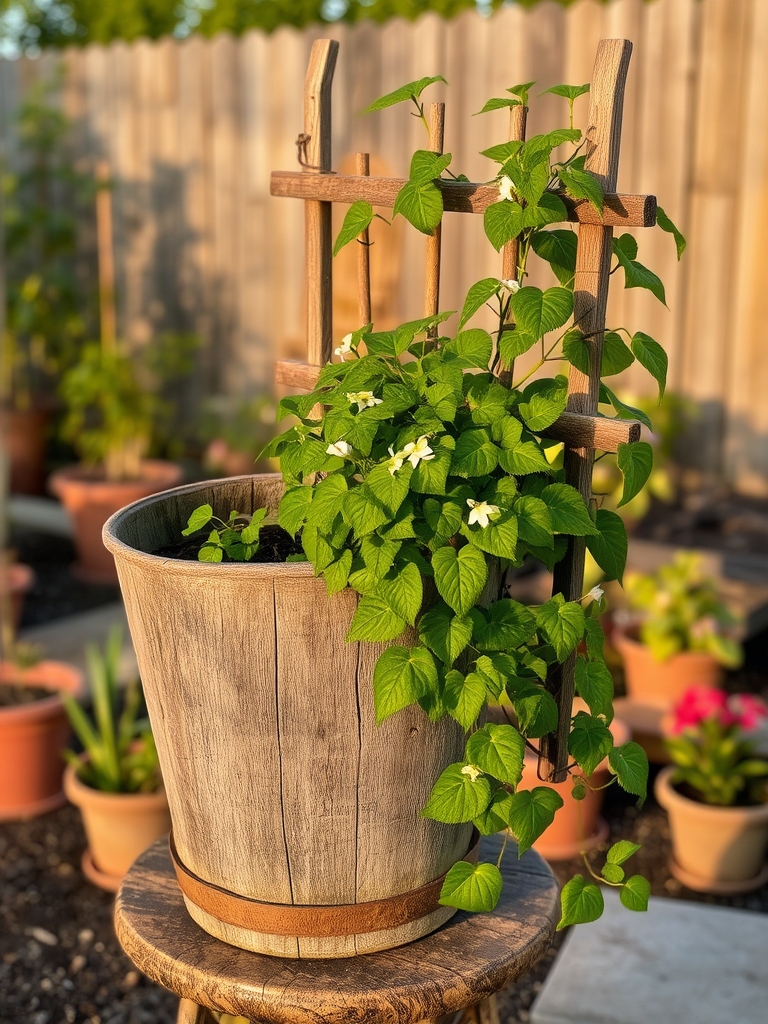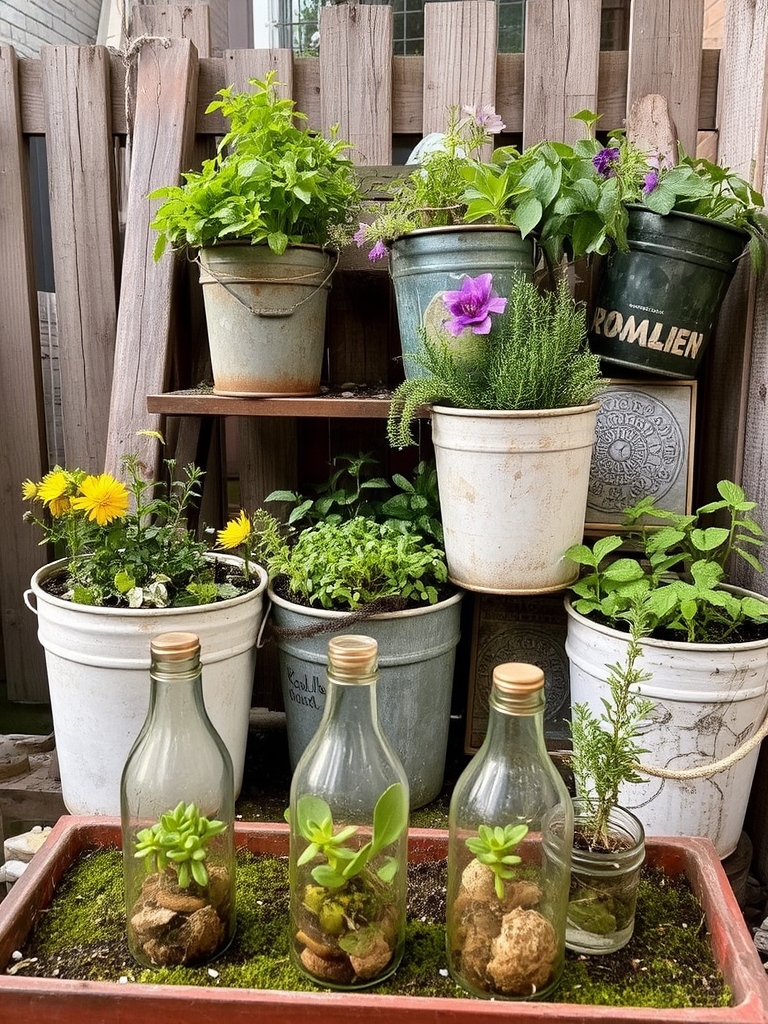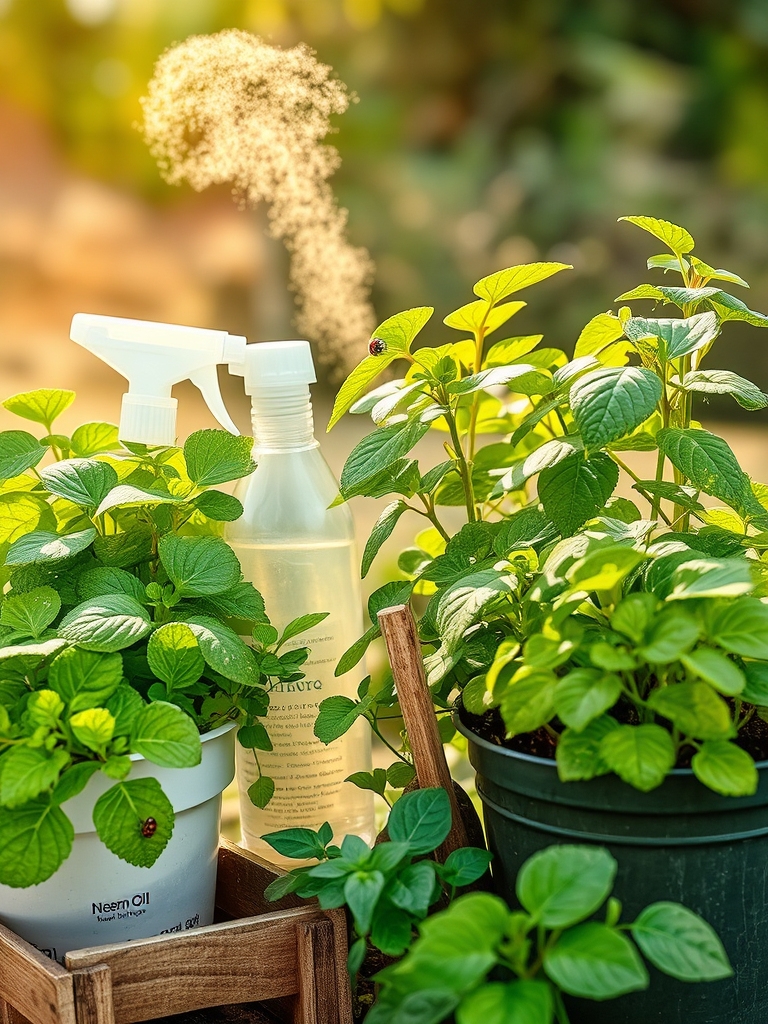You’re looking to maximize your small garden‘s potential and make the most of the space you have. To do this, you need to learn how to optimize space, choose the right plants, and maintain ideal conditions. Your bucket garden will thrive with the right techniques and hacks.
By following these simple and easy steps, you can create a beautiful and productive garden, even in a small space. You will discover the essentials to get you started, from selecting the best plants to caring for them. This will help you grow a amazing bucket garden that you can enjoy and be proud of.
Choosing the Right Buckets

Choose buckets that are sturdy, clean, and have drainage holes to prevent waterlogging. Consider the size and material, such as plastic or wood, to suit your plants’ needs. Guarantee they are large enough to hold the soil and roots of your plants, and have a wide enough mouth for easy planting and maintenance.
Optimizing Soil and Drainage

Optimizing soil and drainage is vital for a thriving bucket garden. Using a well-draining potting mix and adding organic matter like compost or perlite can improve soil structure. Ensuring adequate drainage holes in the bucket prevents waterlogged soil, reducing the risk of root rot and promoting healthy plant growth. Regular soil monitoring also helps maintain ideal conditions.
Vertical Bucket Gardening

Maximize space with vertical bucket gardening, where buckets are stacked or arranged on walls and trellises. This method allows for ideal use of limited areas, such as balconies or small patios, and can support a wide variety of plants, including vining vegetables and flowering plants. It’s a great way to add greenery to small spaces.
Bucket Garden Irrigation Systems

Bucket garden irrigation systems involve using a network of tubes and valves to distribute water from a central bucket to each plant. This efficient method reduces waste and guarantees consistent moisture levels, promoting healthy plant growth. DIY setups can be customized to fit specific garden needs, making it a cost-effective solution for small-scale gardening.
Space-Saving Bucket Arrangements

Space-Saving Bucket Arrangements involve stacking and grouping buckets to maximize vertical space, allowing for more plants to be grown in a small area. This technique also helps to improve air circulation and accessibility, making it ideal for urban gardens or patios with limited space. Buckets can be arranged in tiers or on walls.
Selecting the Best Plants

Selecting the best plants for a bucket garden involves choosing varieties that thrive in containers and have similar growing conditions. Consider plants like tomatoes, peppers, and herbs that are compact or dwarf varieties, making them ideal for bucket gardens with limited space.
Creating a Bucket Garden Trellis

A bucket garden trellis provides support for climbing plants, keeping them organized and maximizing space. Use wooden or plastic stakes, twine, or a trellis kit to create a simple and effective structure. Attach the trellis to the side of the bucket or place it in the center, allowing plants to grow upwards and thrive in their designated space.
Utilizing Recycled Materials

Utilizing recycled materials is a creative way to build a bucket garden. Old buckets, containers, and plastic bottles can be repurposed as planters, reducing waste and adding a unique touch to the garden. This approach also helps minimize costs and promotes sustainability, making it an attractive option for environmentally conscious gardeners.
Managing Pests and Diseases

Managing pests and diseases in a bucket garden requires vigilance and natural methods. Inspect plants regularly for signs of infestation or infection. Use neem oil, soap solution, or introduce beneficial insects to control pests. Remove infected plants to prevent spread, and maintain good air circulation and hygiene to prevent disease.
Bucket Garden Sunlight Maximization

Bucket garden sunlight maximization involves strategically placing buckets to receive ideal sunlight. Position buckets near south-facing windows or outdoors in areas receiving direct sunlight for at least 6 hours a day. This guarantees plants receive sufficient light for photosynthesis and healthy growth, promoting vibrant colors and robust development.
Maintaining Bucket Garden Temperature

Maintaining the ideal temperature is vital for a bucket garden. Use light-colored buckets to reflect sunlight and keep roots cool. Mulch or shade cloth can also regulate temperature, while insulation or heating mats can warm the soil in cold climates. Monitor temperature and adjust as needed to promote healthy plant growth.
Expanding Your Bucket Garden Capacity

Expanding your bucket garden capacity is easy and cost-effective. Simply add more buckets or containers to create a larger growing space. You can also use trellises or vertical planters to maximize space and increase yields. This allows you to grow a wider variety of plants and enjoy a bountiful harvest from your bucket garden.
Conclusion
As you tend to your bucket garden, vibrant blooms and lush greens cascade down, creating a symphony of color and texture. With these hacks, you’ll nurture a thriving oasis, even in tight spaces, and harvest fresh flavors, surrounded by the sweet scent of success, in your very own little garden haven.

